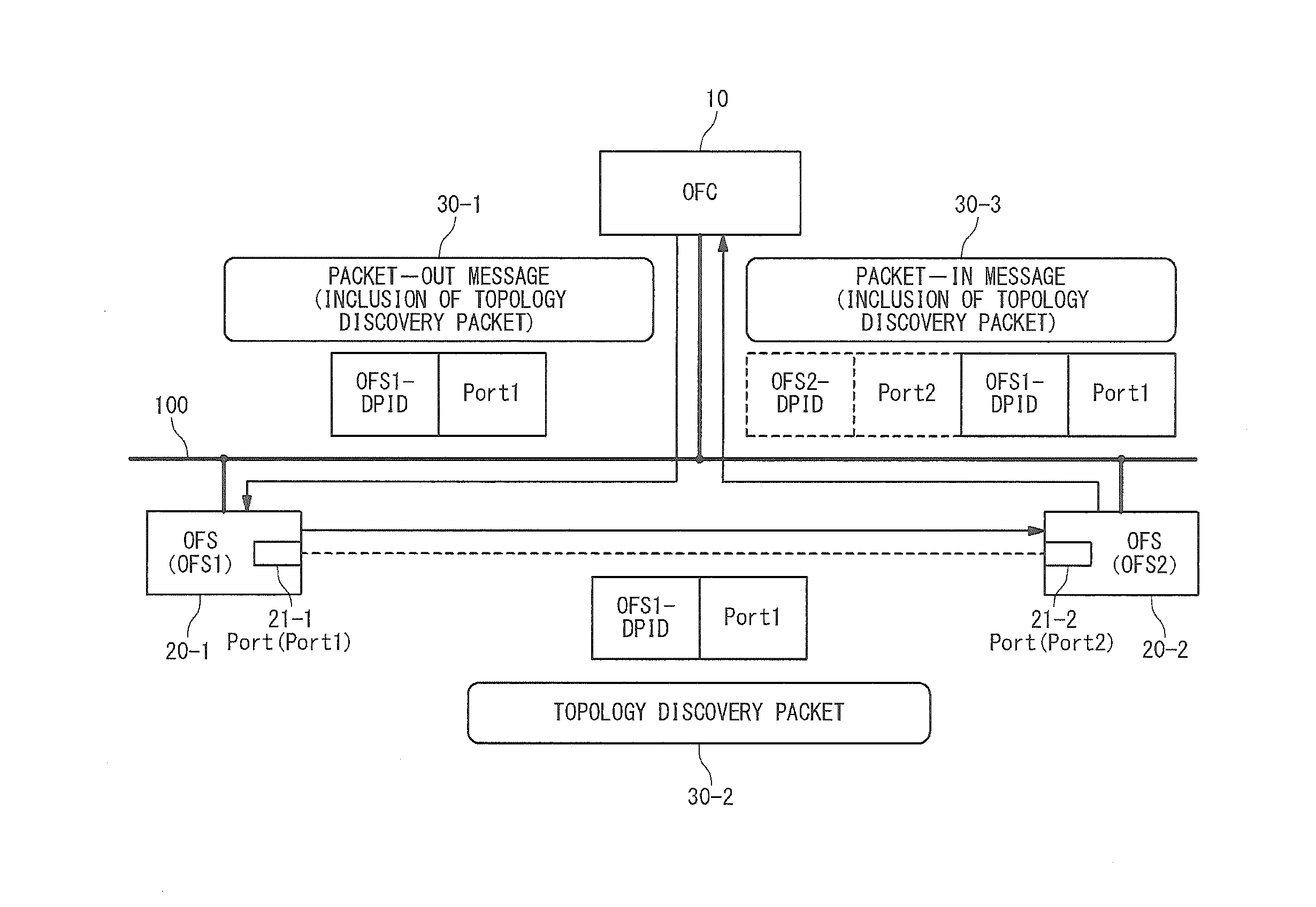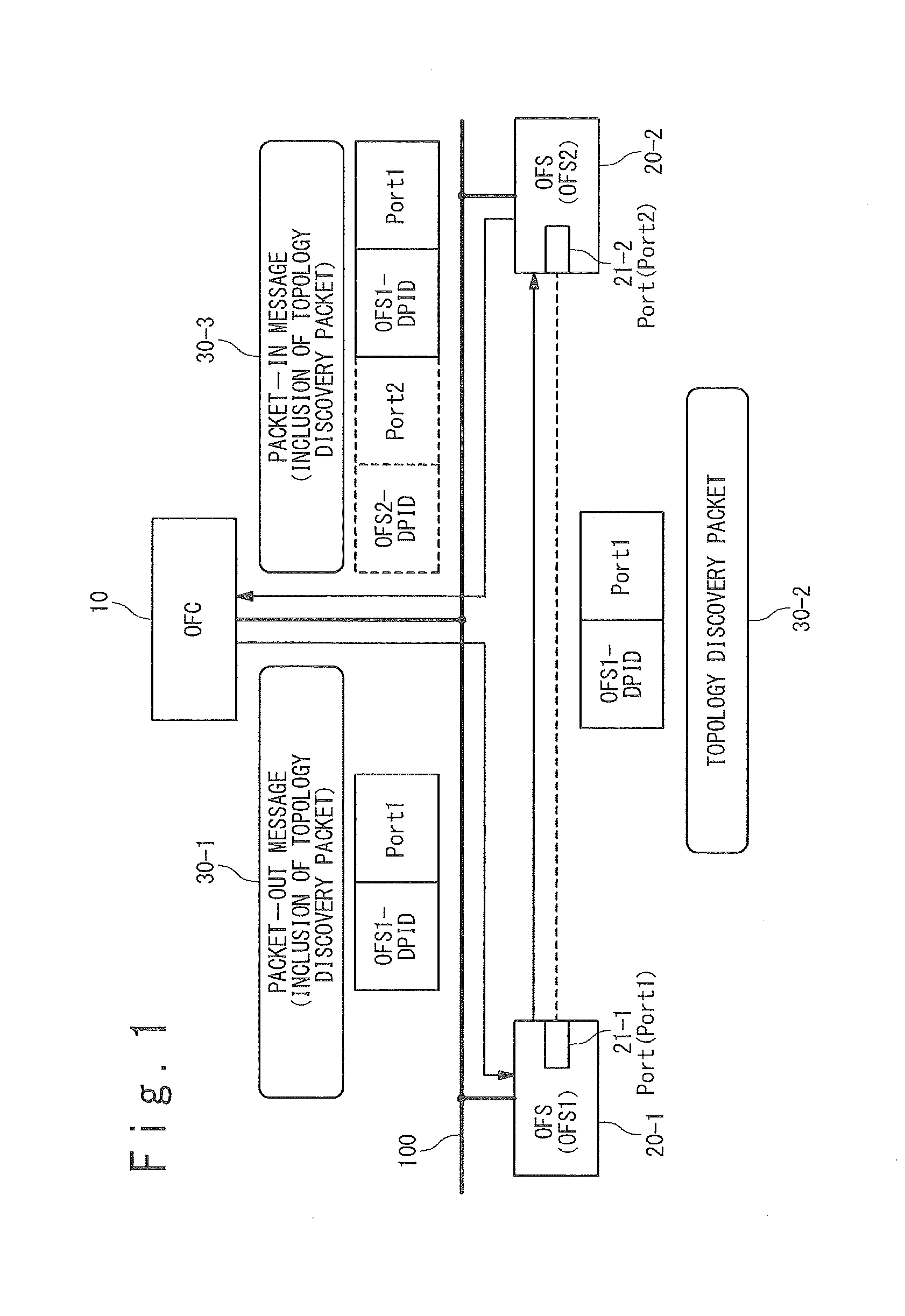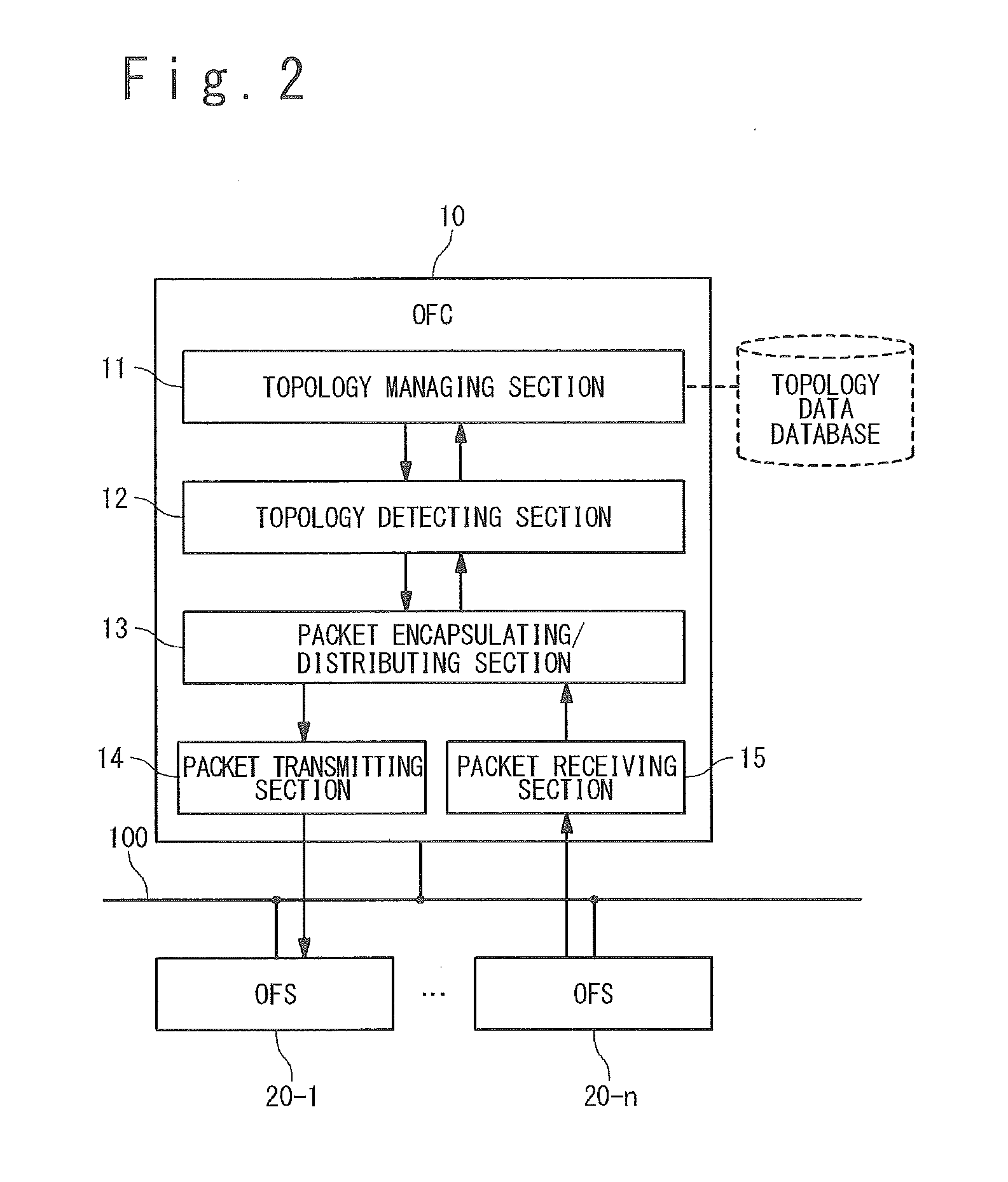Network system and method of managing topology
- Summary
- Abstract
- Description
- Claims
- Application Information
AI Technical Summary
Benefits of technology
Problems solved by technology
Method used
Image
Examples
first exemplary embodiment
[0098]Referring to the attached drawings, a first exemplary embodiment of the present invention will be described below.
[0099]In the present exemplary embodiment, in order to maintain and update a detected topology, the “topology KeepAlive flow entry (TKAFE)” and the “topology keepAlive packet (TKAP)” are prescribed and used.
[0100]The topology KeepAlive packet (TKAP) is a circulation packet which is previously prescribed to maintain and update the detected topology and is a packet which matches the topology KeepAlive flow entry (TKAFE).
[0101]The “topology KeepAlive flow entry (TKAFE)” and the “topology KeepAlive packet (TKAP)” will be described later in detail.
(System Configuration)
[0102]Referring to FIG. 2, a configuration example of the network system according to the present invention will be described.
[0103]The network system according to the present invention contains a controller (OFC) 10 and switches (OFSs) 20 (20-i, i=1 to n: n is an optional integer).
[0104]The controller (O...
examples
[0178]Referring to FIG. 8, an example of the network system according to the present invention will be described.
[0179]In the present example, an open flow network has one controller (OFC) 10 and four switches (OFSs) 20.
[0180]The controller (OFC) 10 is connected with each of the four switches (OFS) 20 through the secure channel network 100. A control signal between the controller (OFC) and the switch (OFS) is transmitted through the secure channel network 100.
[0181]The four switches (OFSs) 20 are a switch (OFS) 20-1, a switch (OFS) 20-2, a switch (OFS) 20-3 and a switch (OFS) 20-4.
[0182]Here, “DPID” of the switch (OFS) 20-1 is supposed to be “OFS1-DPID”. “DPID” of the switch (OFS) 20-2 is supposed to be “OFS2-DPID”. “DPID” of the switch (OFS) 20-3 is supposed to be “OFS3-DPID”. “DPID” of the switch (OFS) 20-4 is supposed to be “OFS4-DPID”.
[0183]Also, “Port1” which is one of the connection ports of the switch (OFS) 20-1 is connected with “Port2” which is one of the connection ports o...
second exemplary embodiment
[0233]Below, the second exemplary embodiment of the present invention will be described.
[0234]In the present exemplary embodiment, when the topology KeepAlive flow entry (TKAFE) expired, the topology test is carried out for the number of times of retry by using the LLDP packet without determining that the failure has occurred in the interconnection port immediately.
[0235]That is, a double test is carried out and when the interconnection relation cannot be confirmed, it is determined that a failure has occurred in the interconnection ports between the switches (OFSs) in the topology test by using LLDP packet.
[0236]Note that the above-mentioned exemplary embodiments can be implemented by combining them.
[0237]Next, the characteristic of the present invention will be described.
[0238]For example, the network system according to the present invention relates to the open flow network in which the controller (OFC) carries out the maintenance and update of the physical topology of the switch...
PUM
 Login to View More
Login to View More Abstract
Description
Claims
Application Information
 Login to View More
Login to View More - R&D
- Intellectual Property
- Life Sciences
- Materials
- Tech Scout
- Unparalleled Data Quality
- Higher Quality Content
- 60% Fewer Hallucinations
Browse by: Latest US Patents, China's latest patents, Technical Efficacy Thesaurus, Application Domain, Technology Topic, Popular Technical Reports.
© 2025 PatSnap. All rights reserved.Legal|Privacy policy|Modern Slavery Act Transparency Statement|Sitemap|About US| Contact US: help@patsnap.com



